Good evening, friends,
This past week was one that featured many different mushrooms — a few which I had never seen before — and whittling down to one species for this week’s feature was no simple task. I sat down thinking I would focus on the curry bolete (Boletus sensibilis) which we found during the solstice walk in Stamford, CT, but the identification process was too convoluted and subjective (i.e. “does it turn blue fast or slow?”). Then there were the parrot mushrooms (Gliophorus sp.) which were in abundance Saturday morning in Tuxedo, NY. This was the first time I’d ever seen these mushrooms, but again there are a couple different species which made identification frustrating. Hmm.
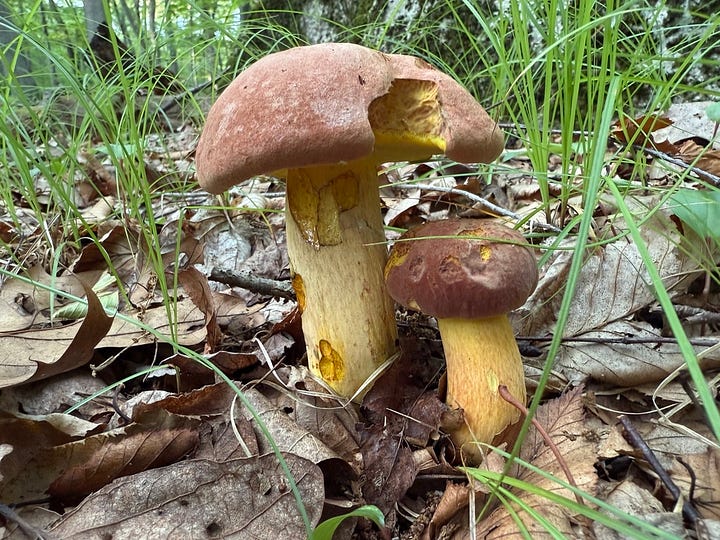

There was one particular mushroom — erupting out of wood at the very end of our solstice walk — that stopped a couple of us in our tracks. A robust, white, veiled mushroom crawling with flies.
It could’ve been the fatigue from the blood donation I’d made earlier (to the mosquitos over the previous two hours of the walk), but I had trouble figuring out what type of mushroom we were even looking at. Perhaps a stinkhorn with all those flies crawling on it? A little extra inspection and internet research finally landed us on the veiled oyster (Pleurotus dryinus).
Fun Facts
Oyster mushrooms (Pleurotus) are some of the most vigorous fungal decomposers in the environment and are frequently the focus of bioremediation research. P. dryinus is no different. Pleurotus fungi produce a powerful enzyme, laccase, which they use to break down lignin (one of the main structural compounds in wood, and indigestible to humans).
One study from Canada looked at P. dryinus that was cultivated on municipal biosolids (sewage sludge would be the non-scientific term). The researchers wanted to see how much laccase they could get the fungus to produce, and if the concentrated laccase could help remove pesticides and herbicides from their wastewater (Reference 2). They found that if the substrate was sterilized, more laccase was produced (which seems counterintuitive as you would think unsterilized substrate would require greater enzyme production). The researchers used concentrated laccase to remove herbicides like atrazine completely from the sewage sludge and broke down other harmful herbicides/pesticides by 91 to 97%. A novel and promising idea for cleaning up wastewater — we’re gonna need a lot more laccase.
Another study conducted by researchers in Canada and India found that organic soil inoculated with Pleurotus dryinus was more effective at breaking down harmful compounds — such as phenanthrene, a compound found in pesticides — than the soil’s native microbes were on their own (Reference 3).
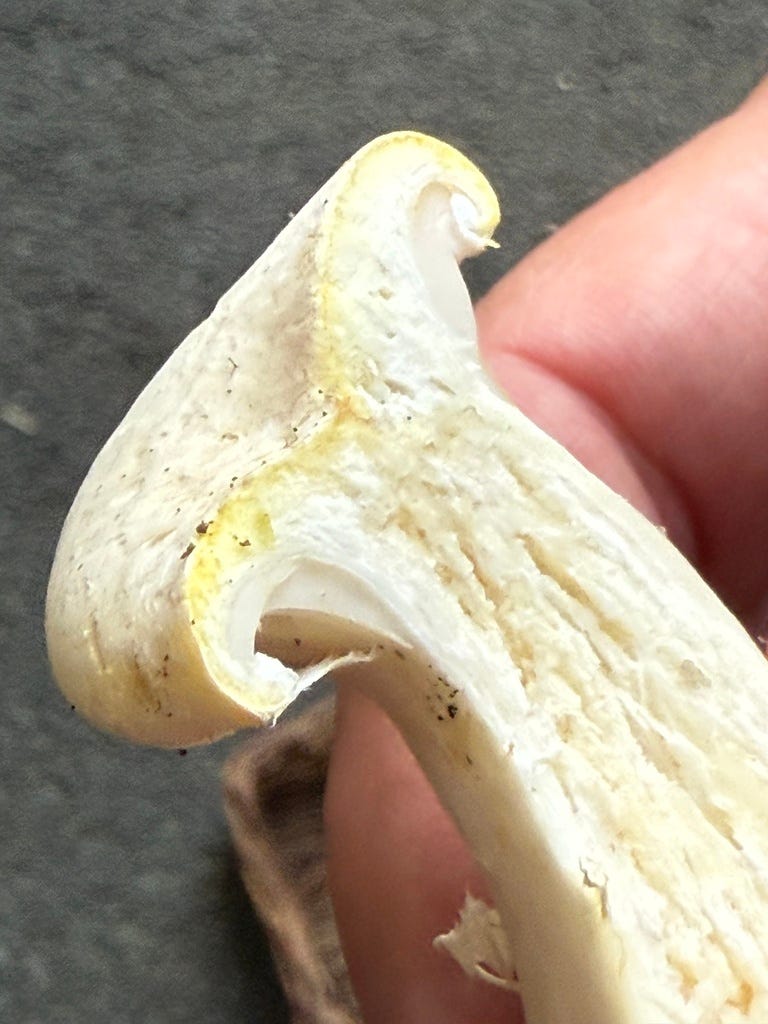
The etymology of Pleurotus comes from Ancient Greek and breaks down to pleur which means "side" and otus which means "ear". This references the typical shape of oyster mushrooms (semi-circular, ear-like), as well as their sideways projection from the wood substrate. The species epithet dryinus comes from the Ancient Greek drys which means “oak” and the suffix -inus which means “belonging to”, as oak is a common substrate for this mushroom.
Like other oyster mushrooms, this mushroom is also edible. The insects got there long before we did, though.
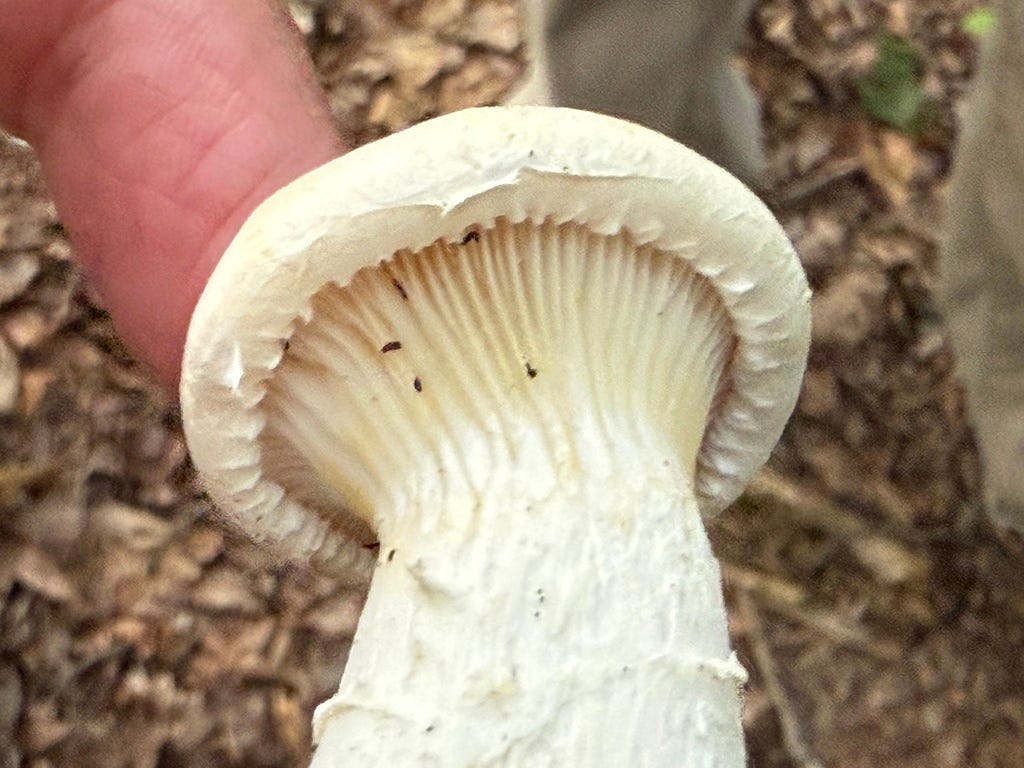
Ecology
The fungus is saprobic (a decomposer) on hardwoods. These veiled oysters seem to only grow in Europe and North America where they grow summer through fall. Perhaps the most notable characteristic outside of the veil was that our mushroom smelled sweet, like candy, and one person even described it as lightly anise.
There is a nearly identical mushroom, Pleurotus levis, that allegedly inhabits more southernly climes. The distinction between the two species is fairly unclear, and this is one of those instances where a common name may be just as useful (it’s a type of oyster mushroom with a veil). MushroomObserver and iNaturalist maps show that P. dryinus grows in both Europe and North America, while P.levis only grows in North America, but likely there are even more species than just these two throughout both the continents.
I settled on P. dryinus for three reasons. The first was because of the latitude, Connecticut is well north of the tropics). Secondly, P. dryinus seems to be the name most of the reputable mycologists online (Michael Kuo, Walt Sturgeon) lean toward. Lastly, and perhaps the most convincingly, the pictures of P. dryinus on MycoQuebec line up with this mushroom while P. levis seems to be get fairly yellow in the cap.
To think I settled on this mushroom originally because I thought the identification was fairly straight-forward, but now it’s almost 11pm and here we are.
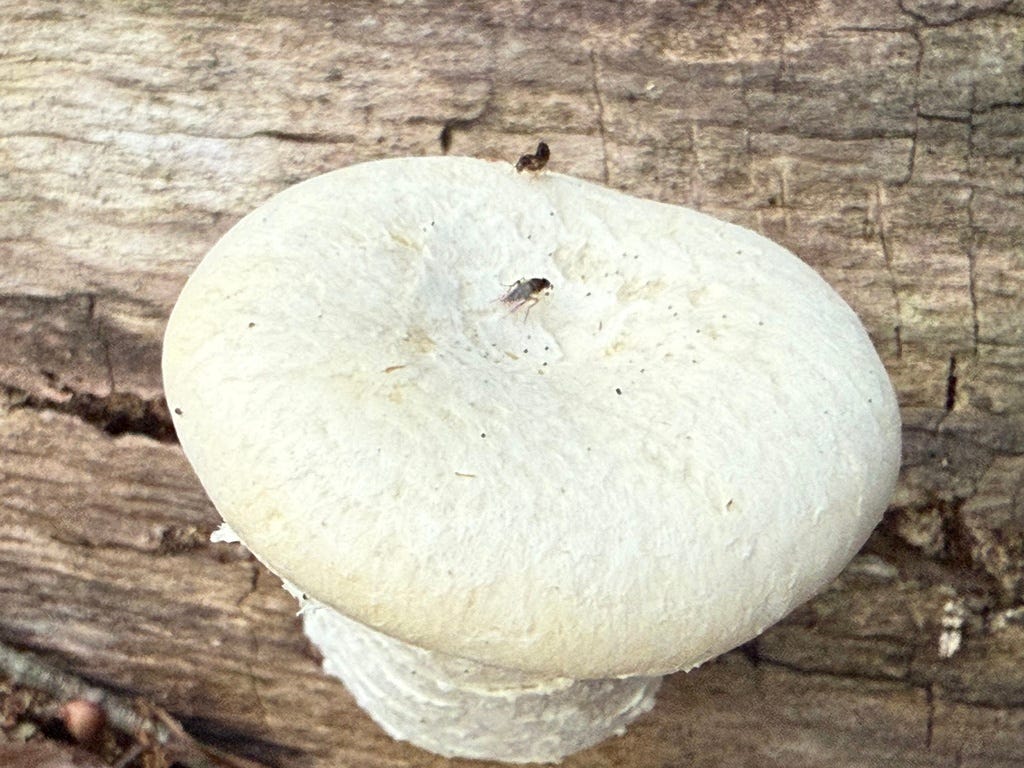
We’re on the other side of the summer solstice. Hopefully the rain keeps coming and provides us with plenty of summer and fall mushrooms. Remember to hydrate,
Aubrey
References:
Kuo, M. (2018, February). Pleurotus dryinus. Retrieved from the MushroomExpert.Com Web site: http://www.mushroomexpert.com/pleurotus_dryinus.html
Vaithyanathan VK, Vaidyanathan VK, Cabana H. Laccase-Driven Transformation of High Priority Pesticides Without Redox Mediators: Towards Bioremediation of Contaminated Wastewaters. Front Bioeng Biotechnol. 2022 Feb 11;9:770435. doi: 10.3389/fbioe.2021.770435. PMID: 35223809; PMCID: PMC8874138.
Rathankumar AK, Saikia K, Ramachandran K, Batista RA, Cabana H, Vaidyanathan VK. Effect of soil organic matter (SOM) on the degradation of polycyclic aromatic hydrocarbons using Pleurotus dryinus IBB 903-A microcosm study. J Environ Manage. 2020 Apr 15;260:110153. doi: 10.1016/j.jenvman.2020.110153. Epub 2020 Jan 27. PMID: 32090843.
https://www.mycoquebec.org/bas.php?tag=Pleurotus%20dryinus&iumq=1912
https://www.mycoquebec.org/bas.php?tag=Pleurotus%20levis&iumq=1395
https://mushroomexpert.com/fungionwood/gilled%20fungi/species%20pages/Pleurotus%20dryinus.htm





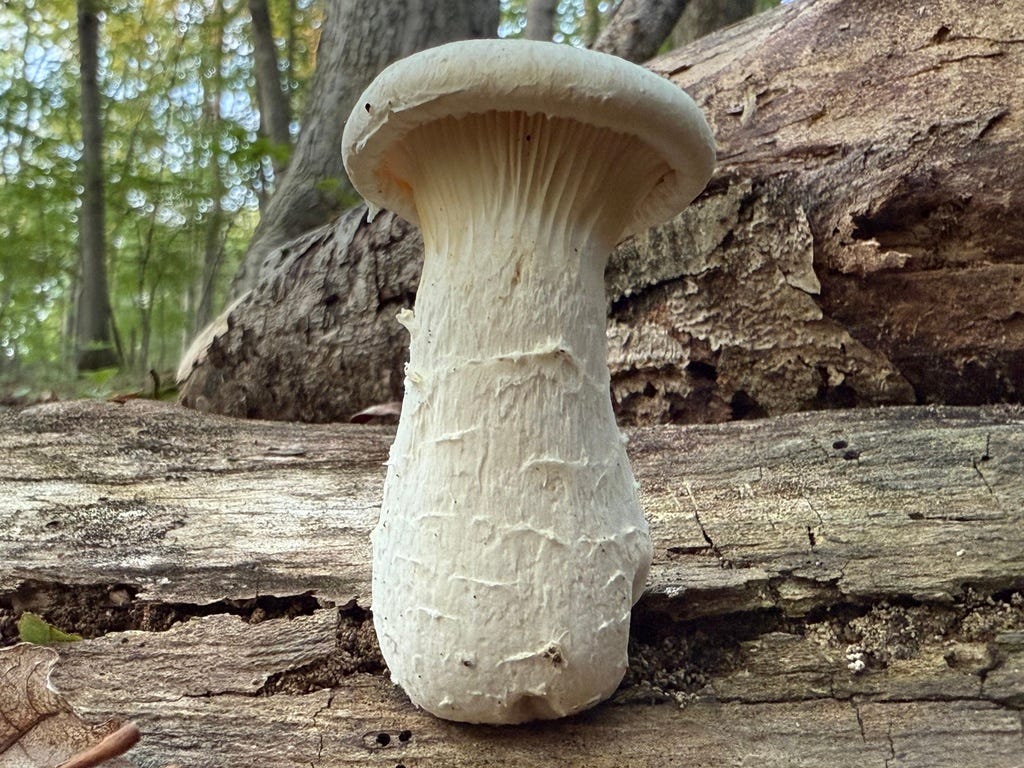
Difficult to read captions, shade of
lettering so faint.fyi☀️🙏🌱
I saw this in Illinois in November 2022! Also stopped me in my tracks..